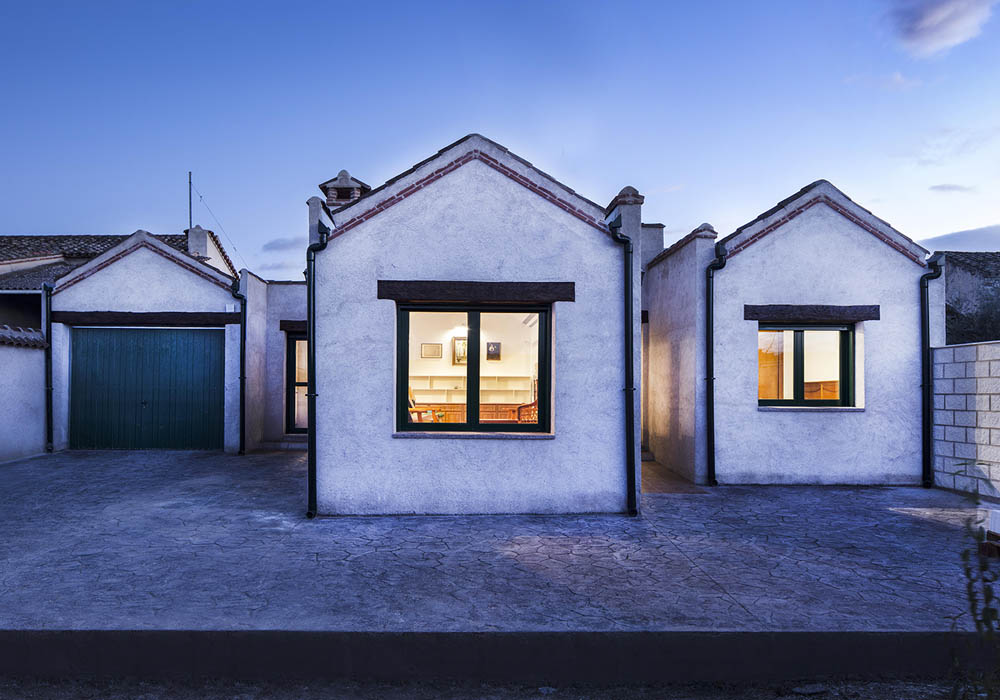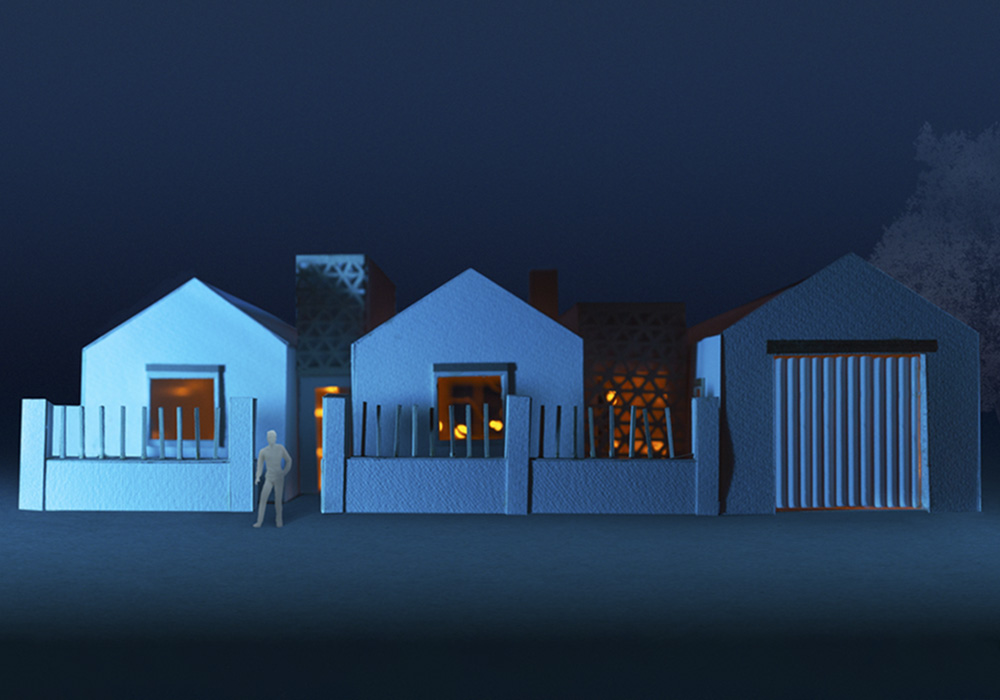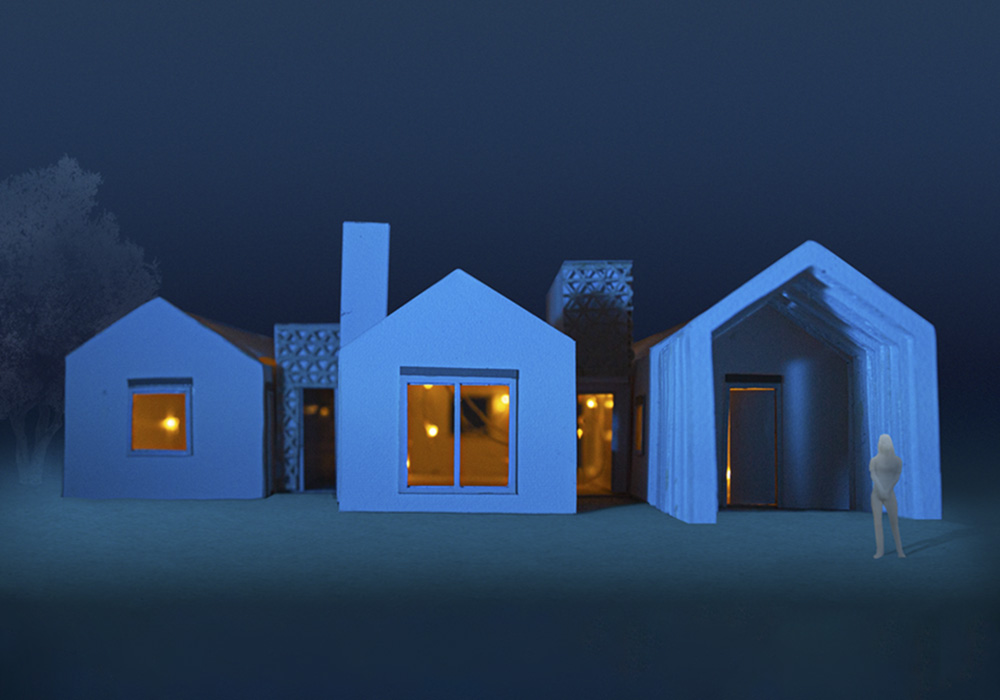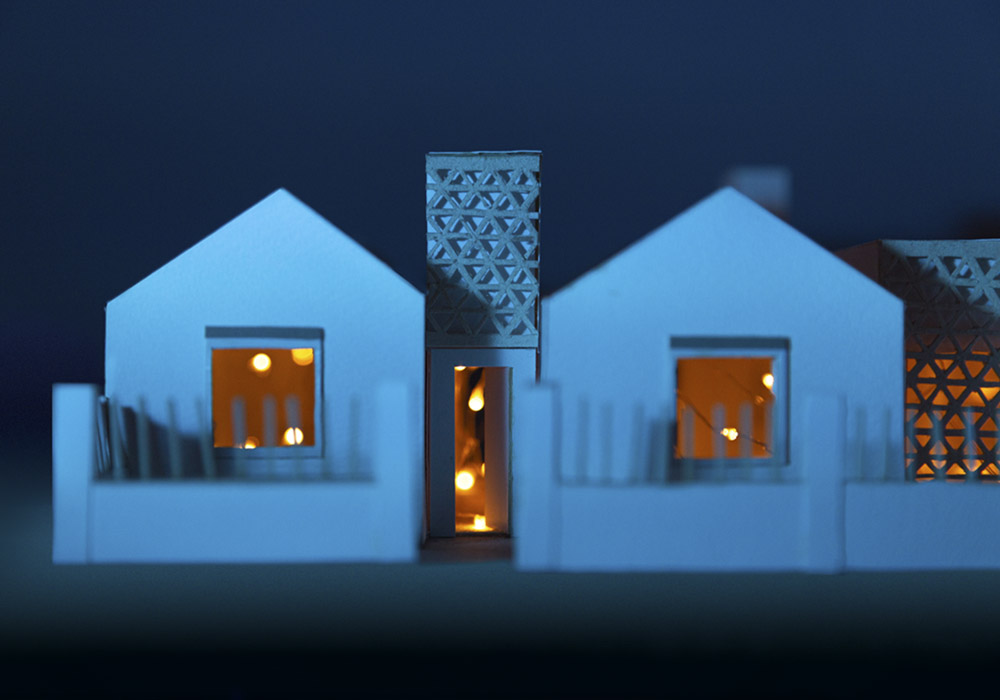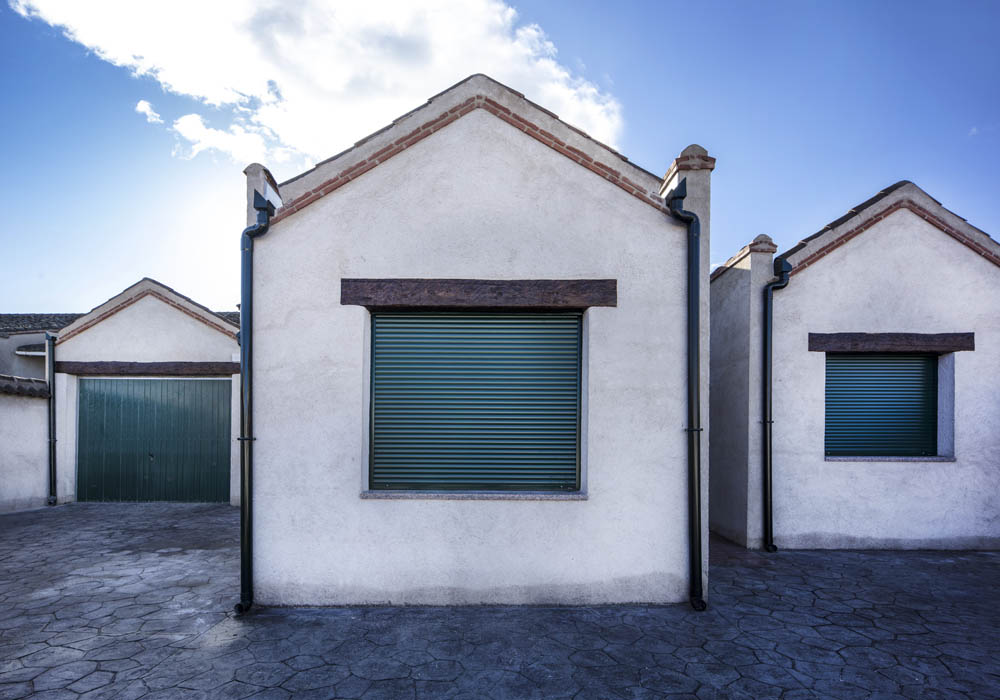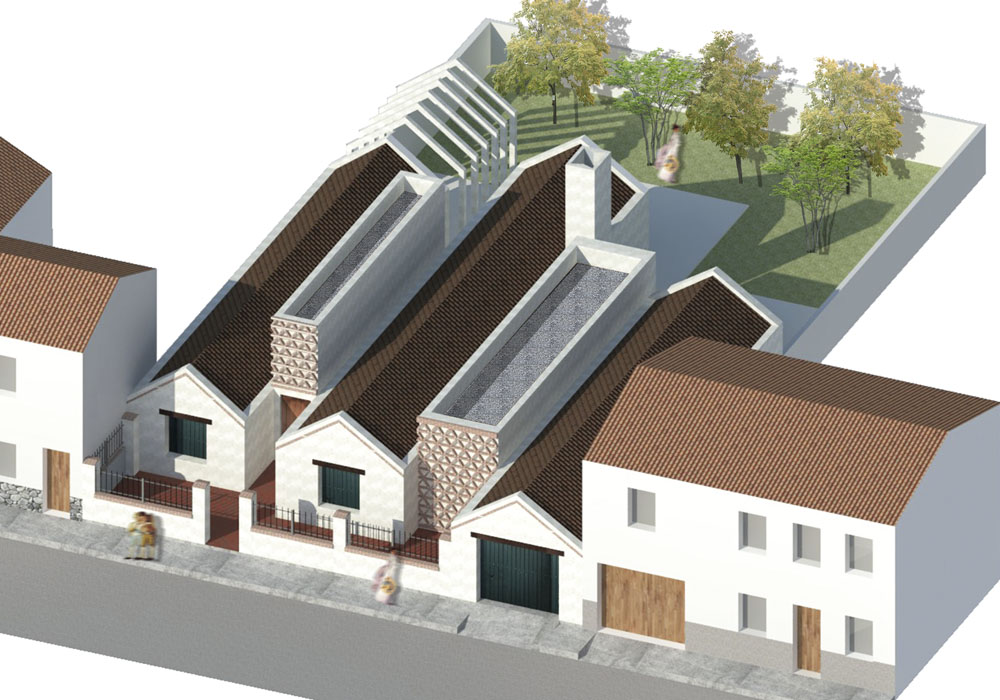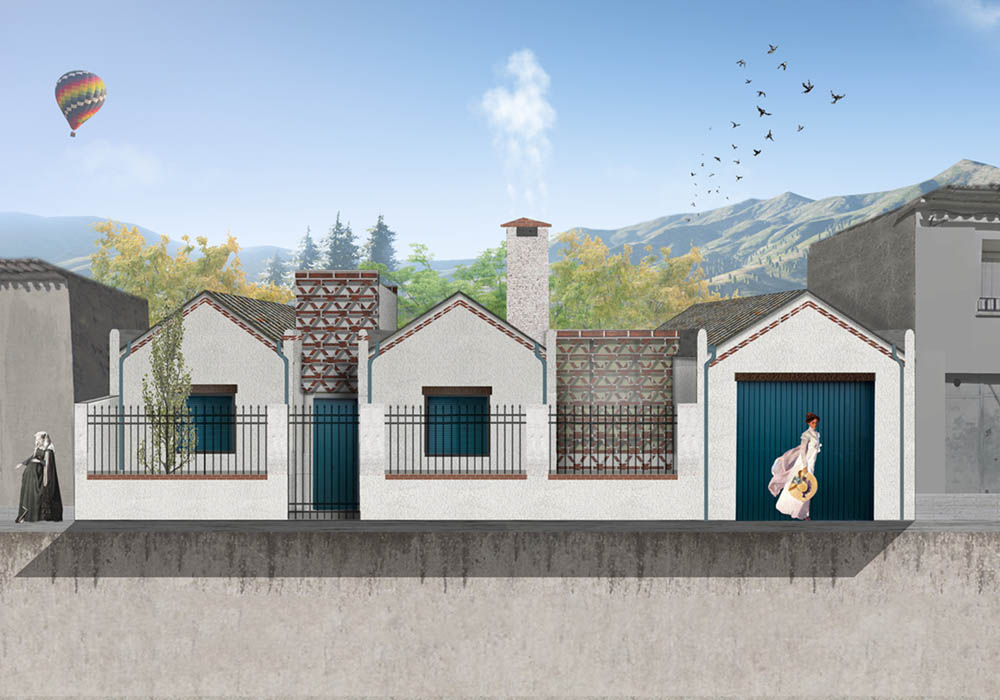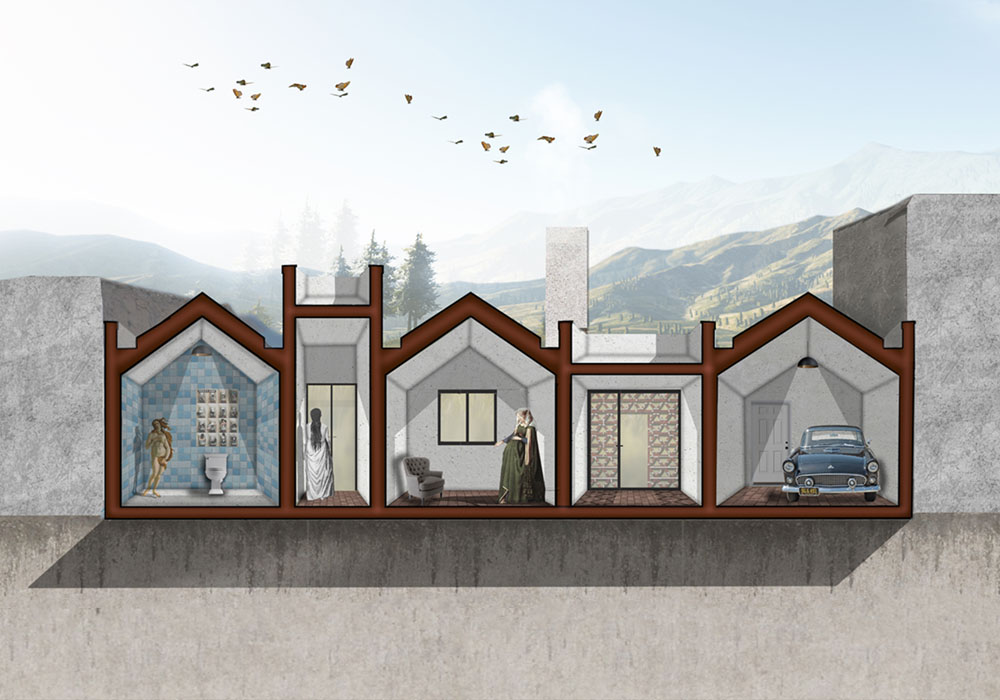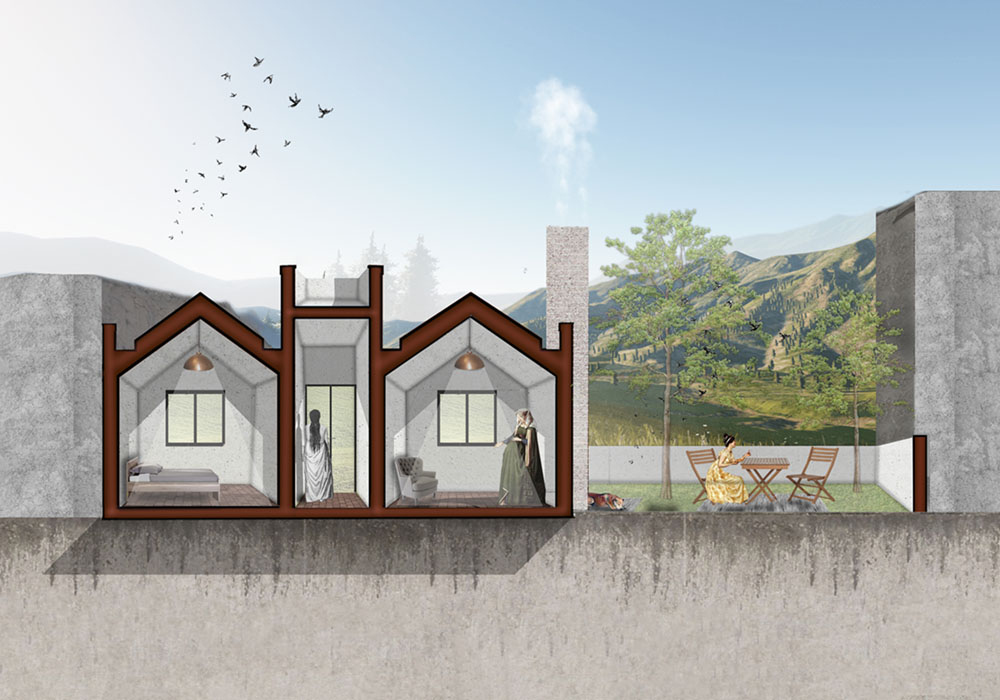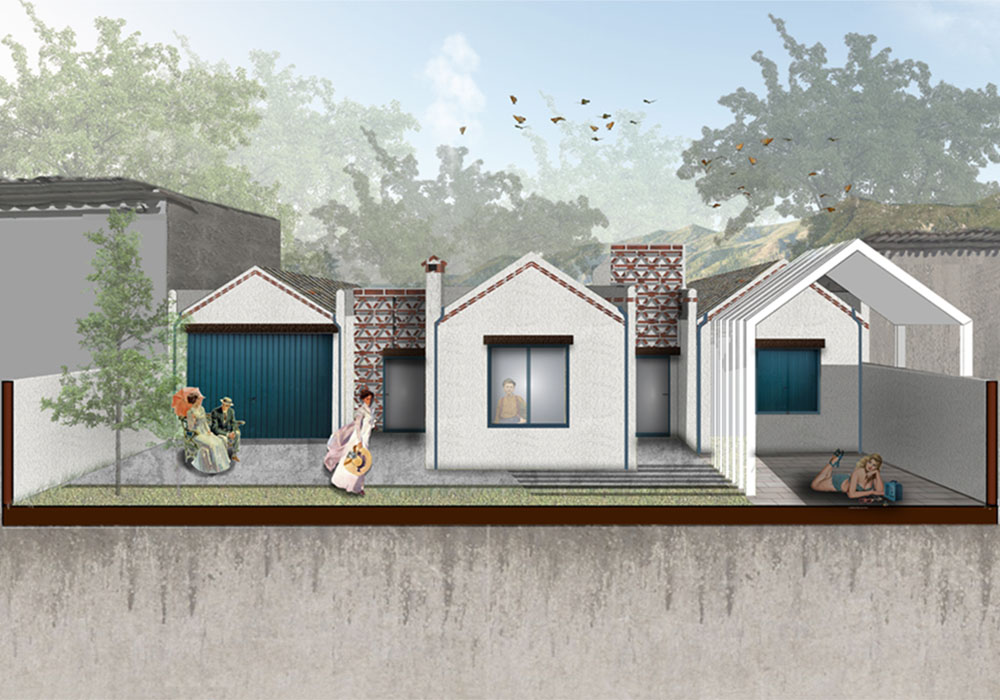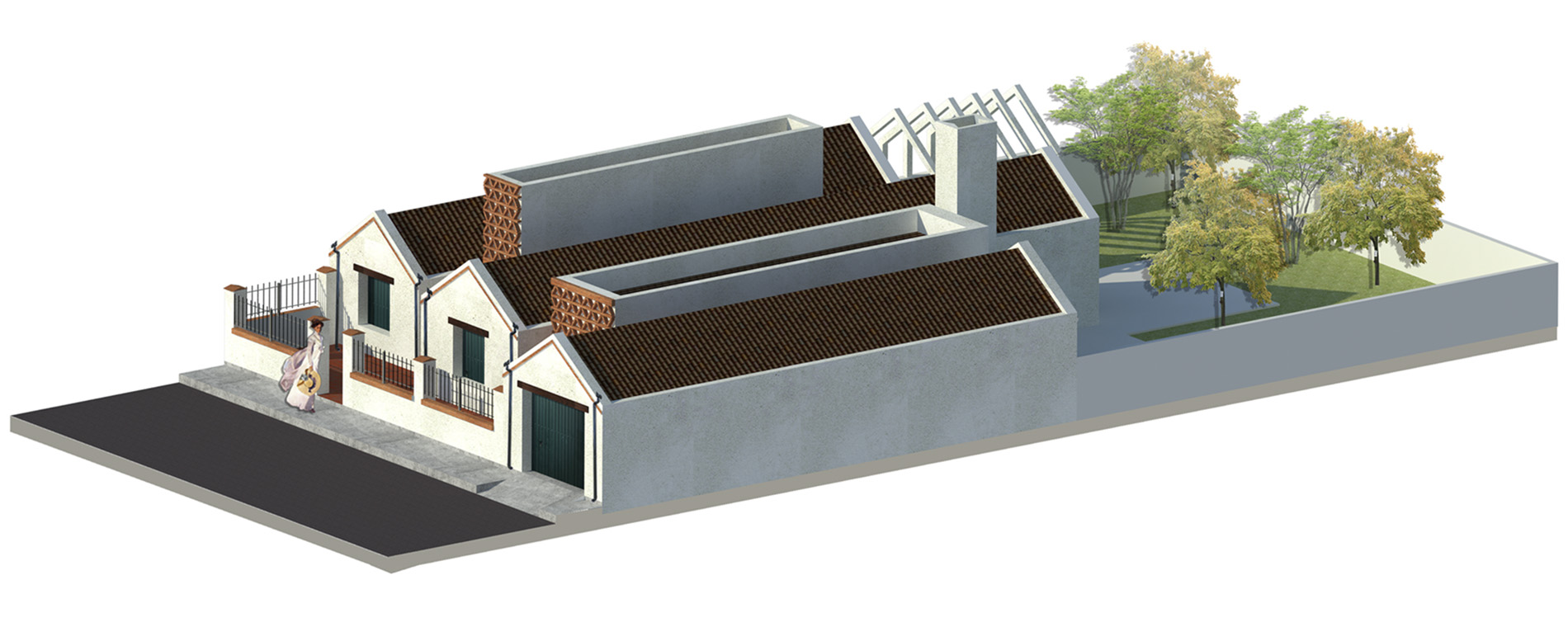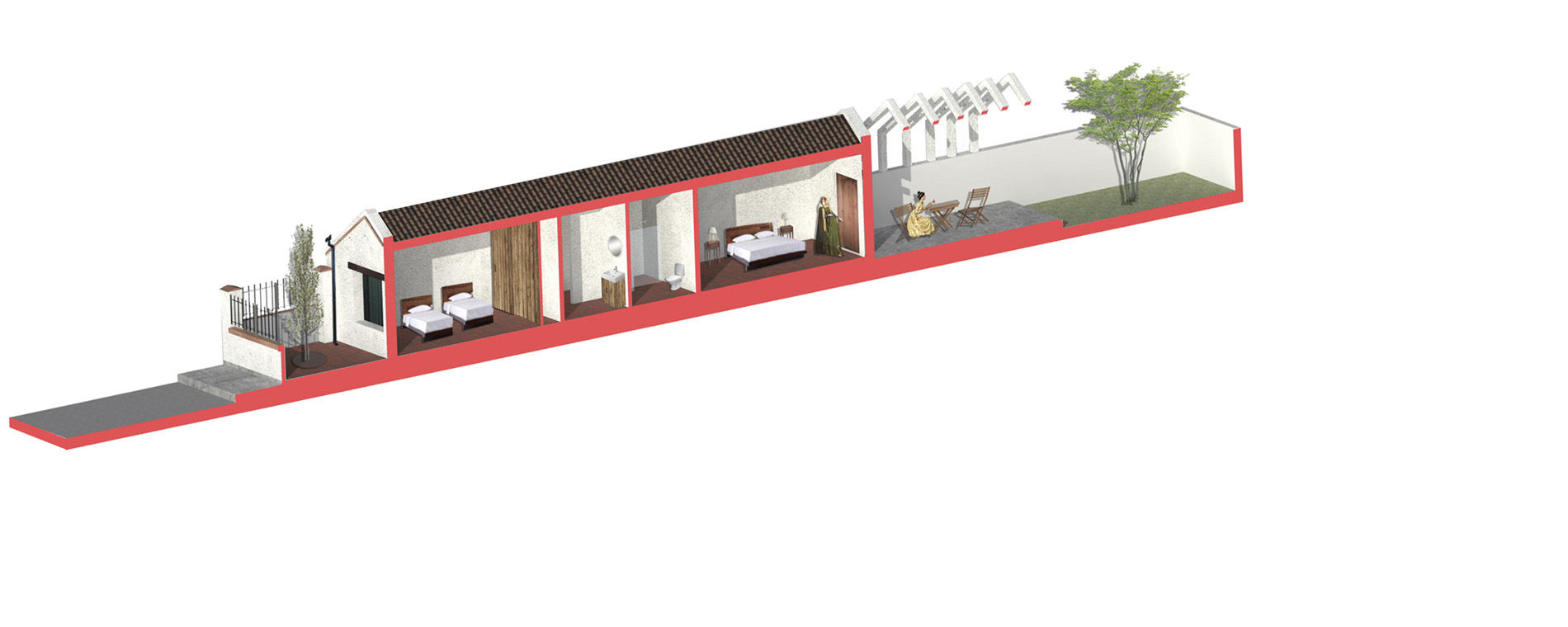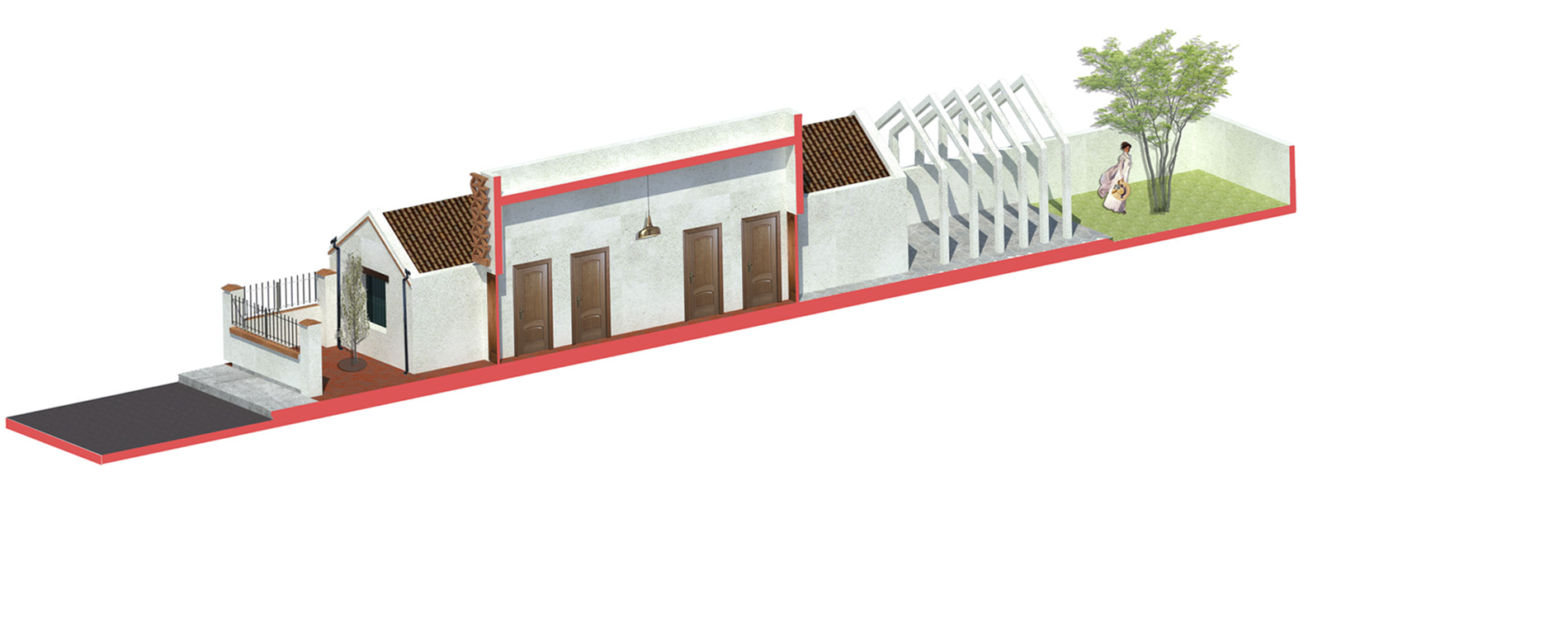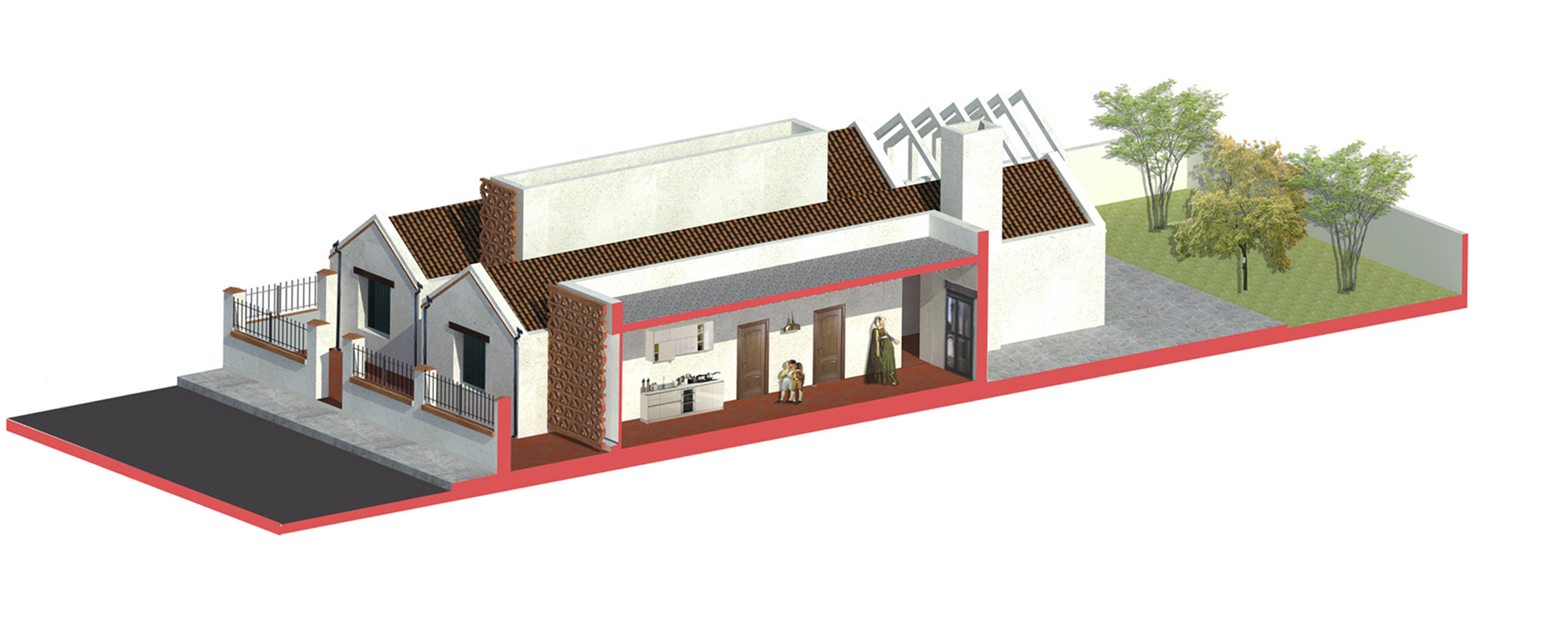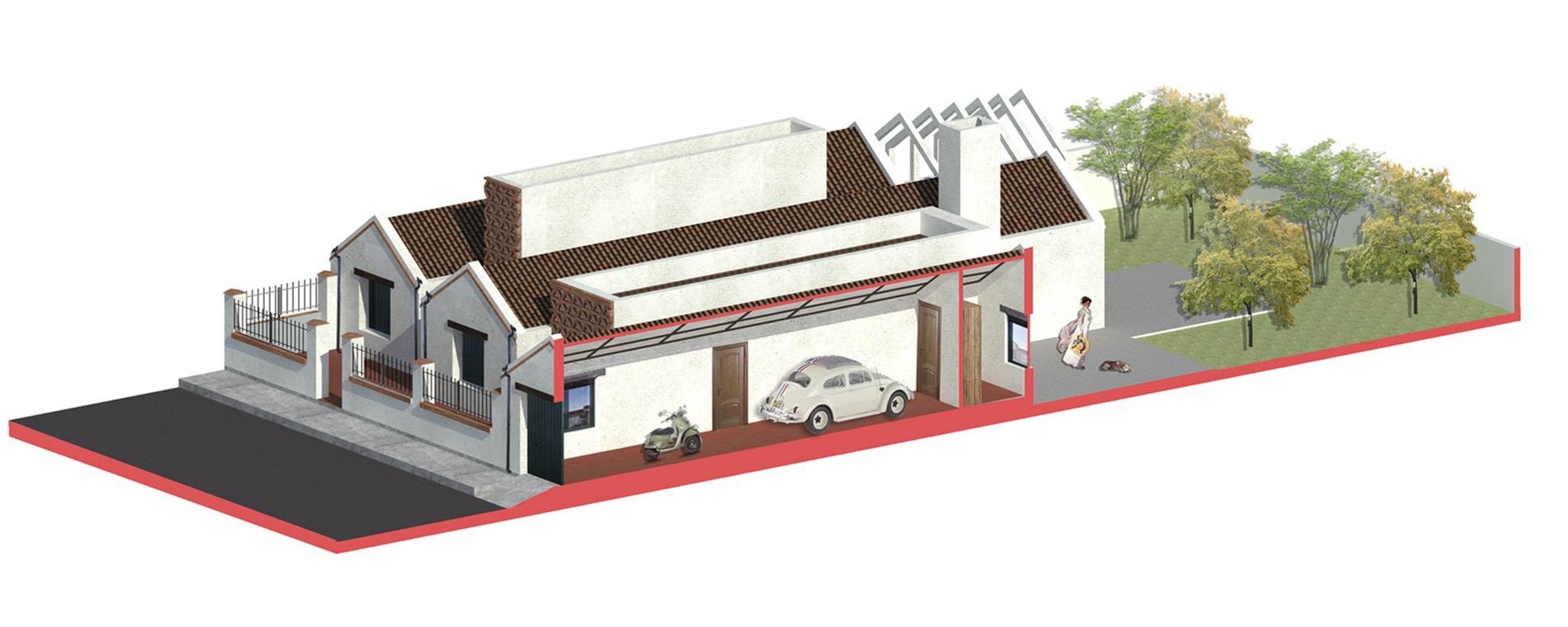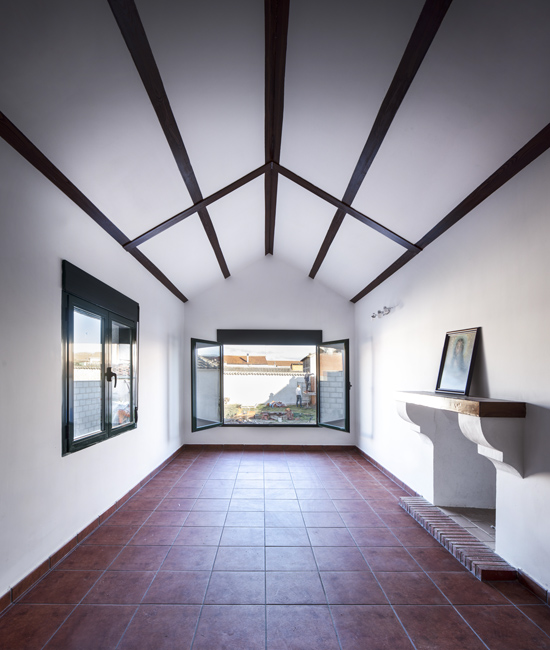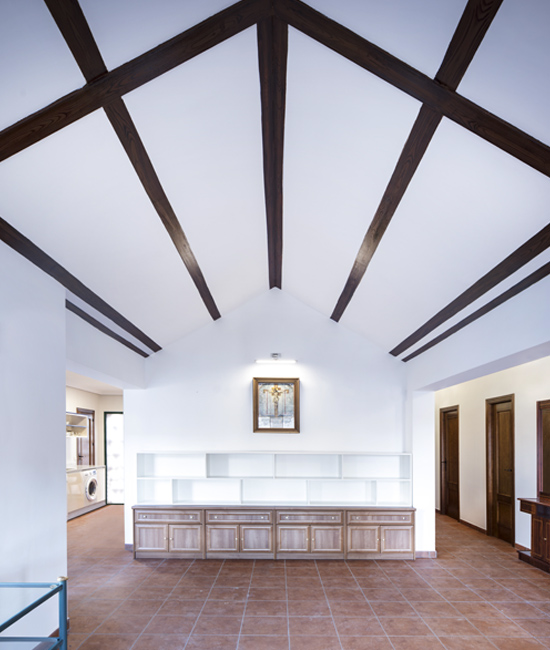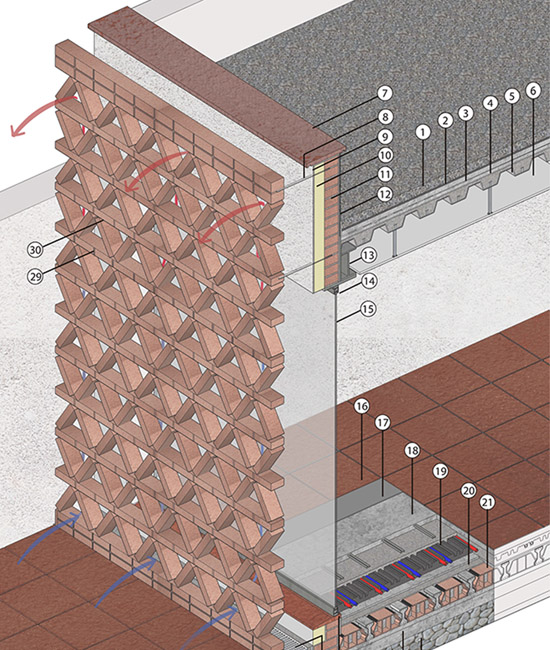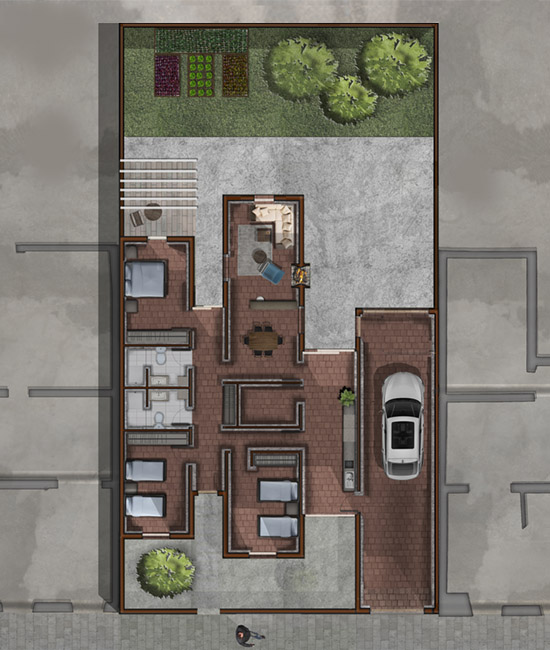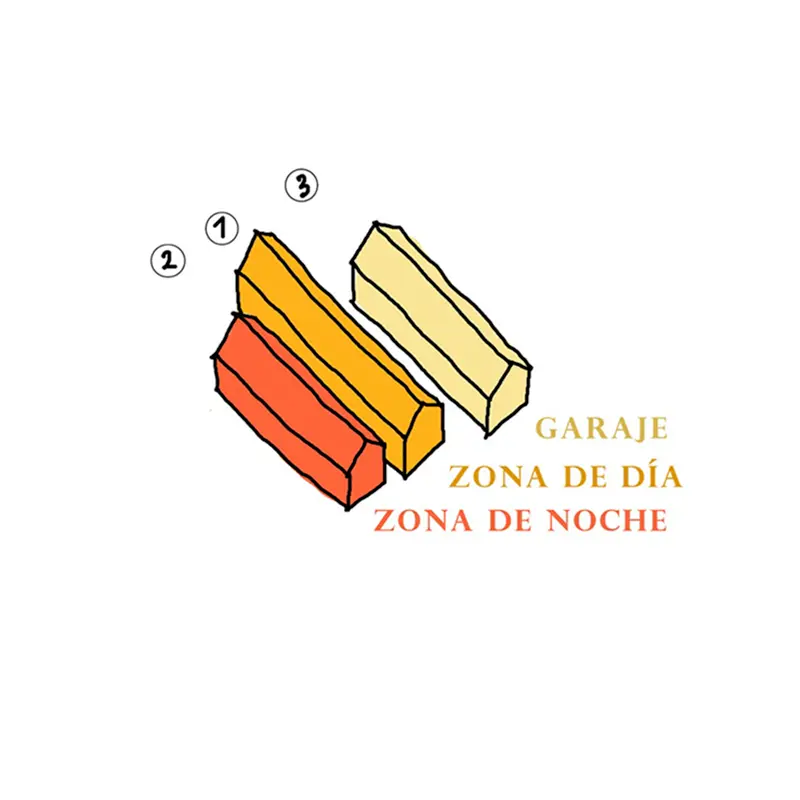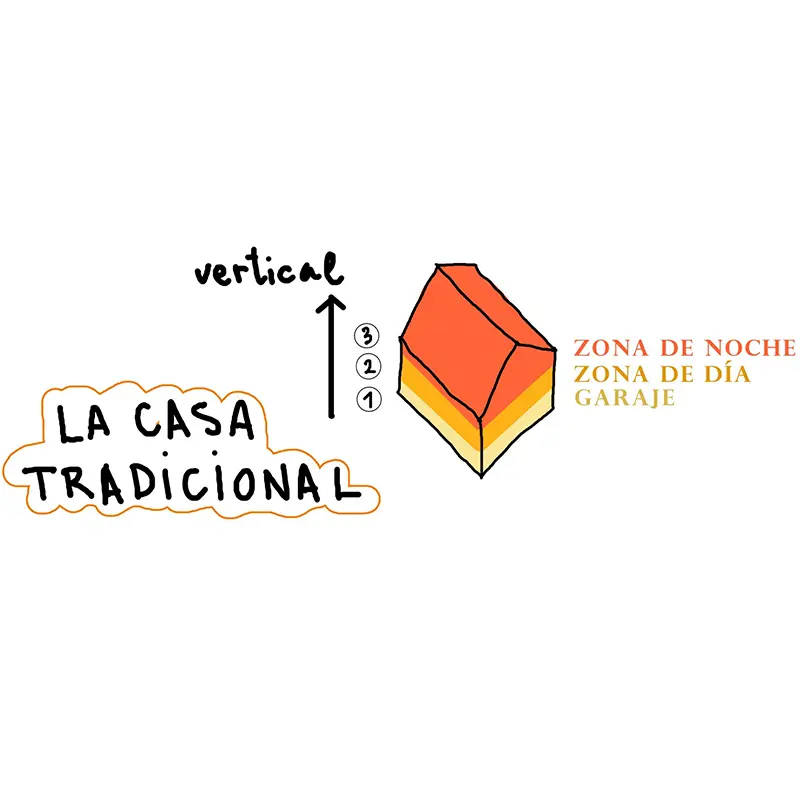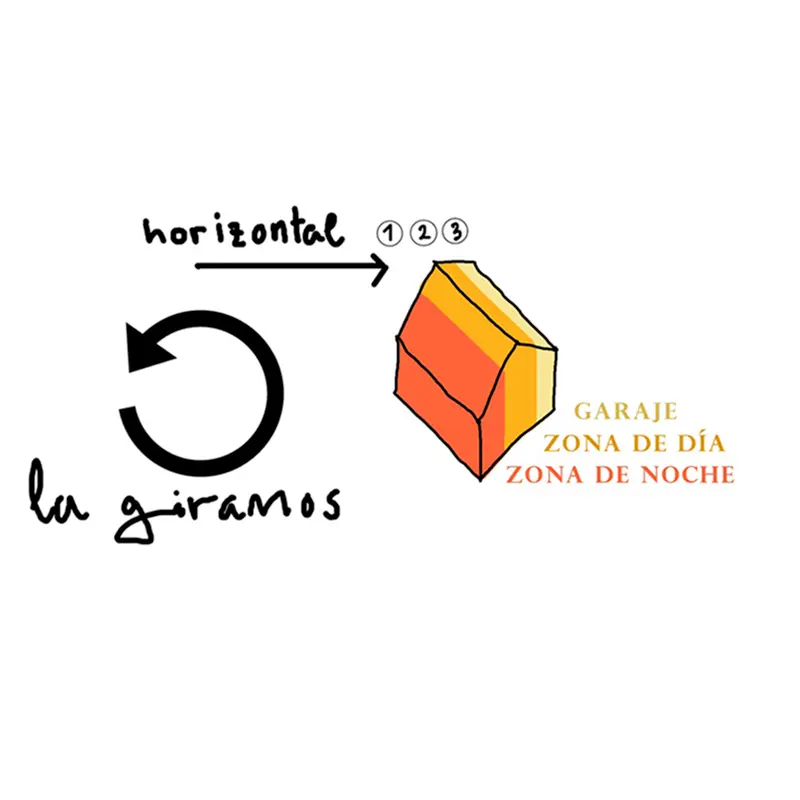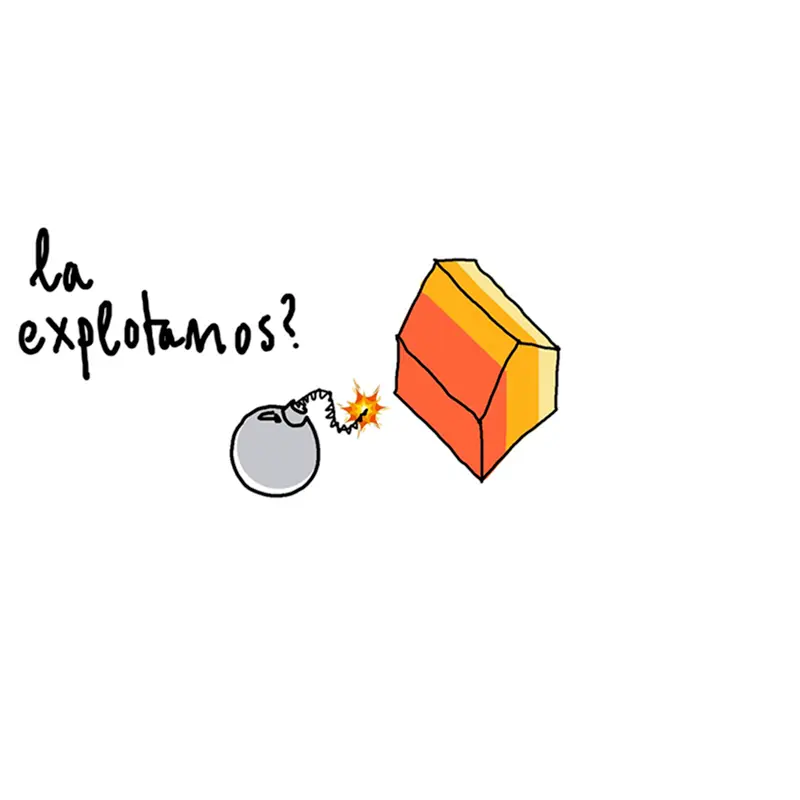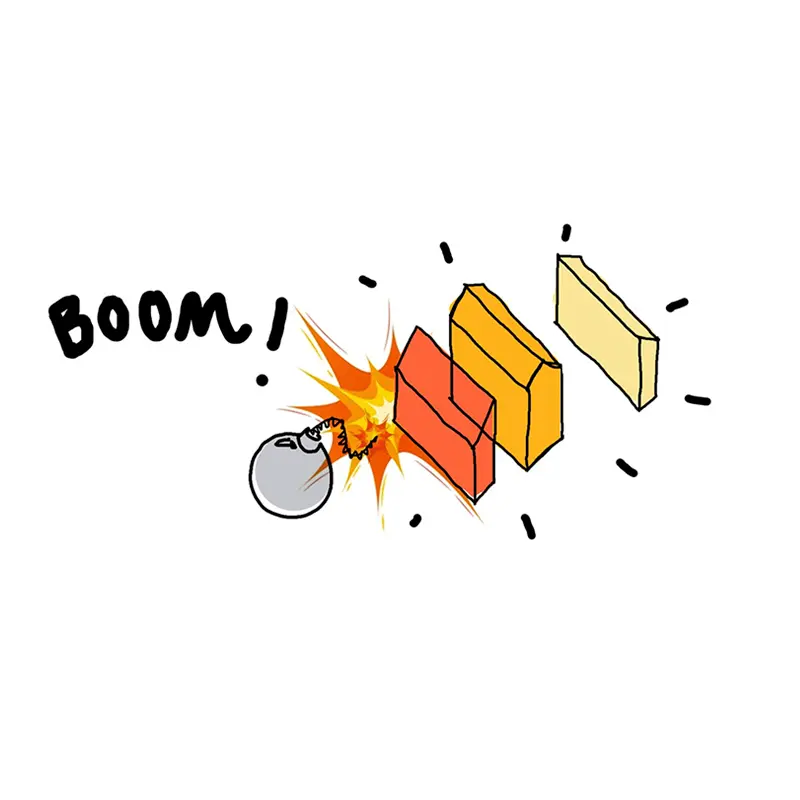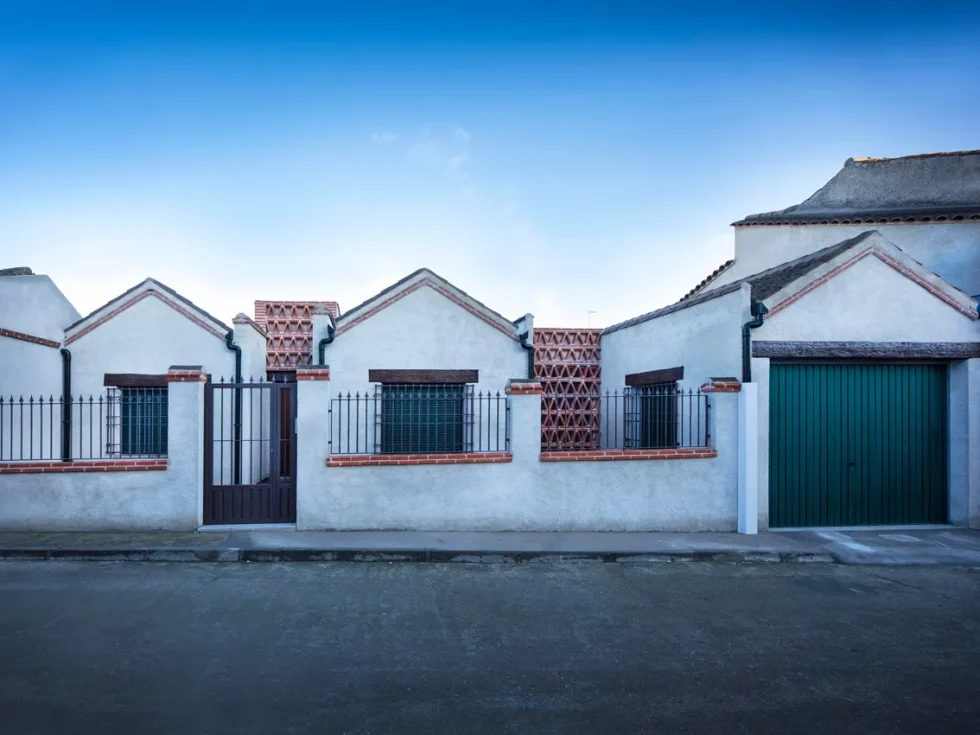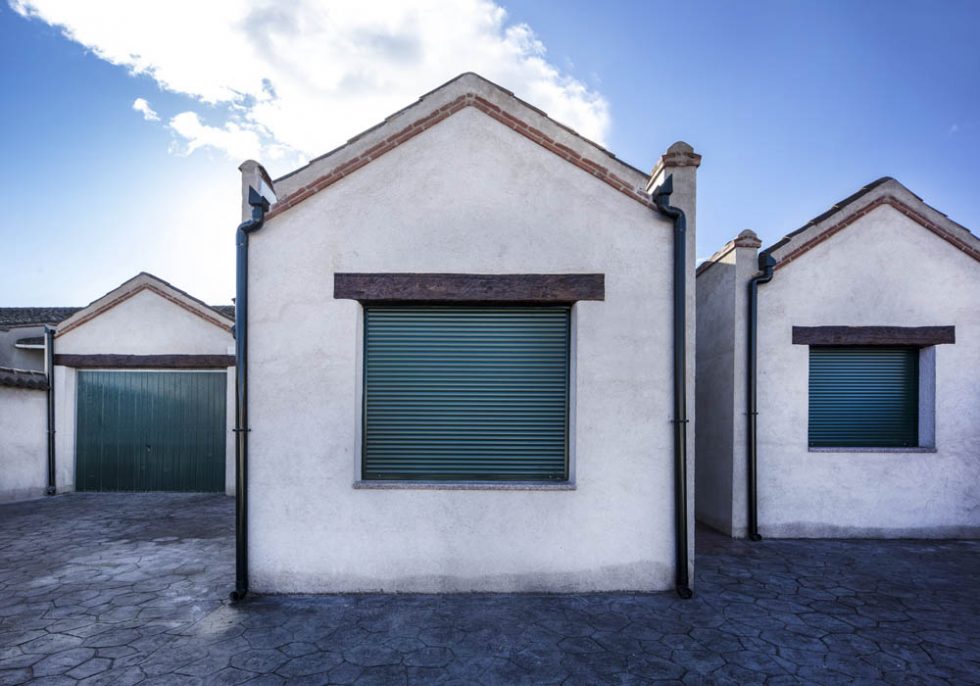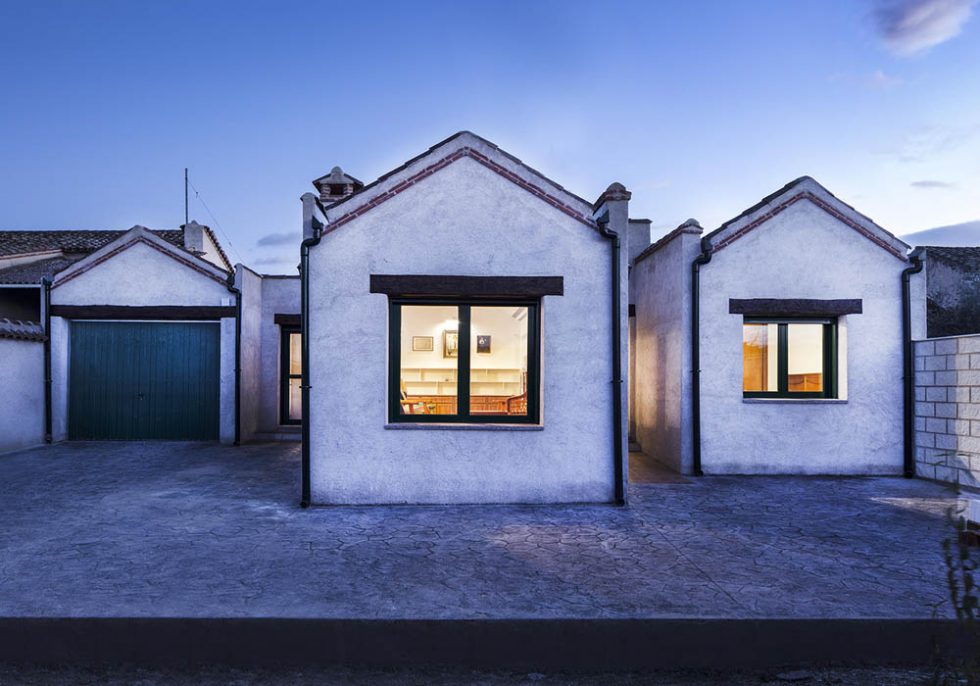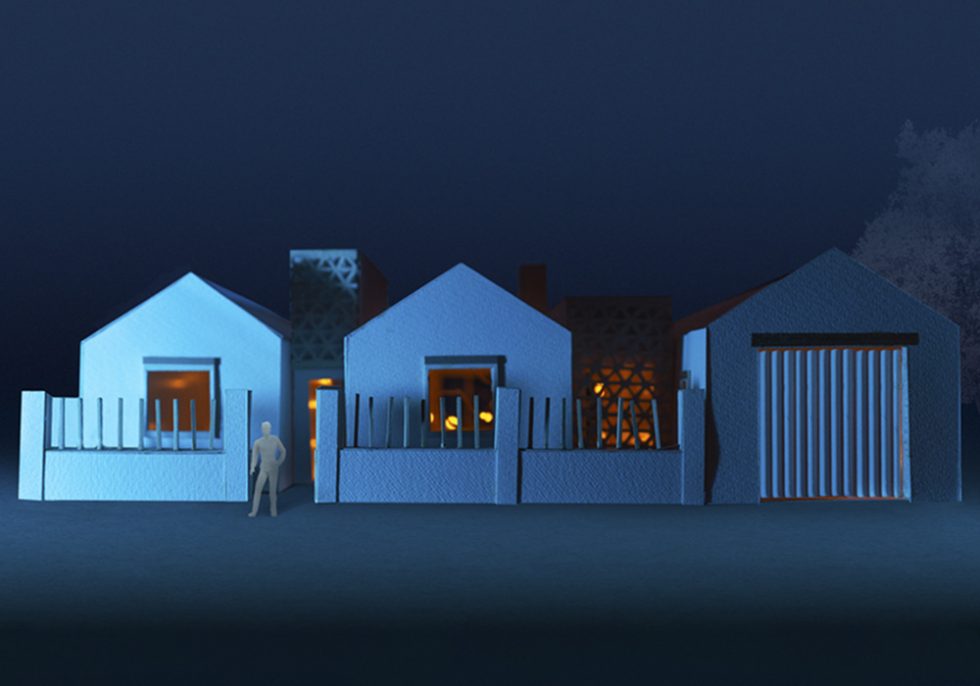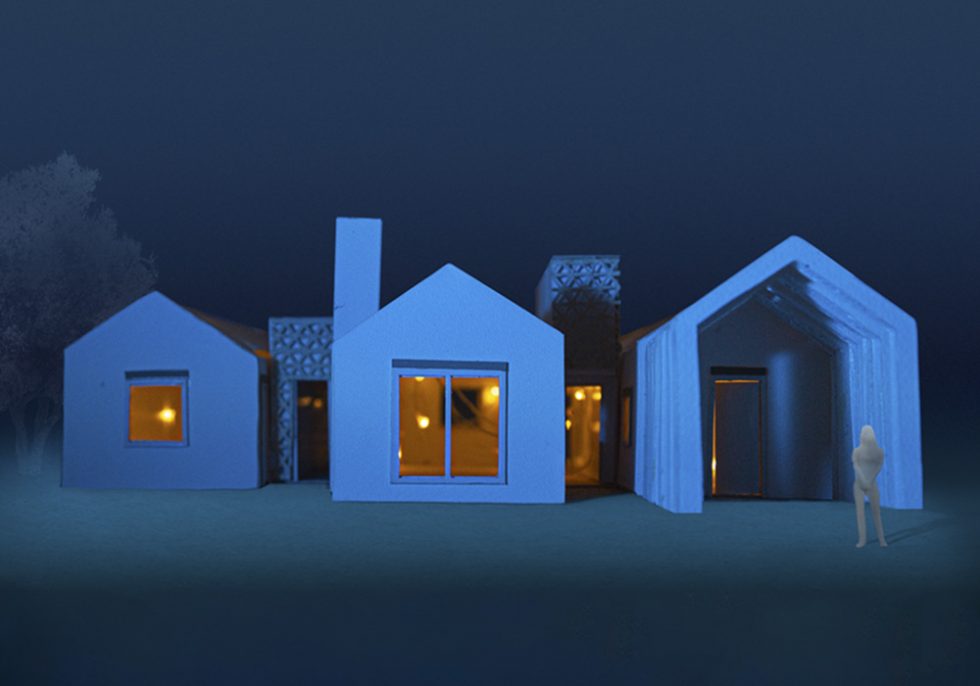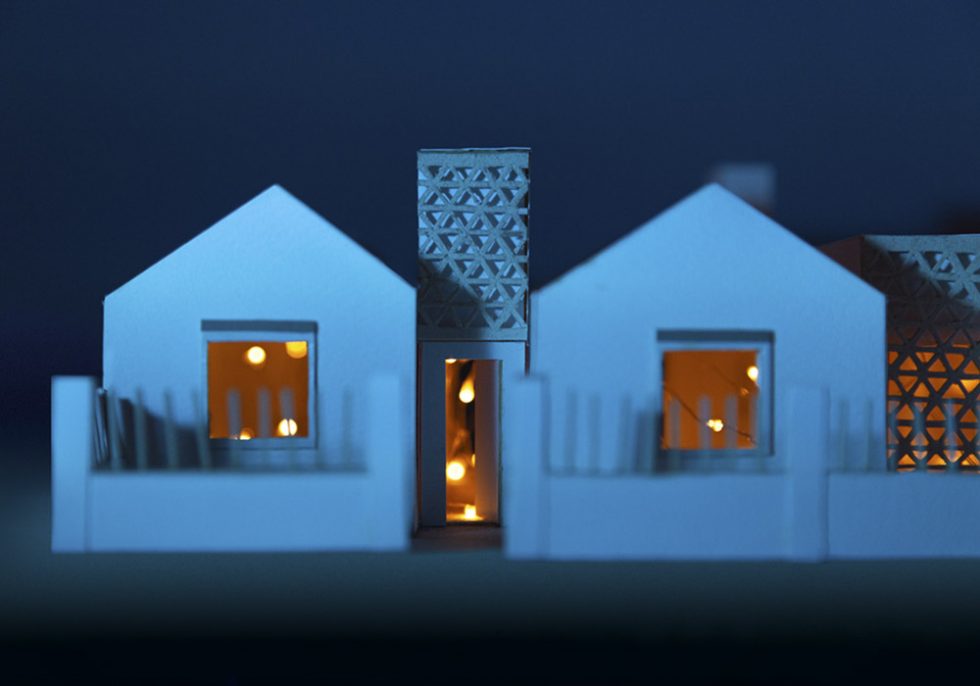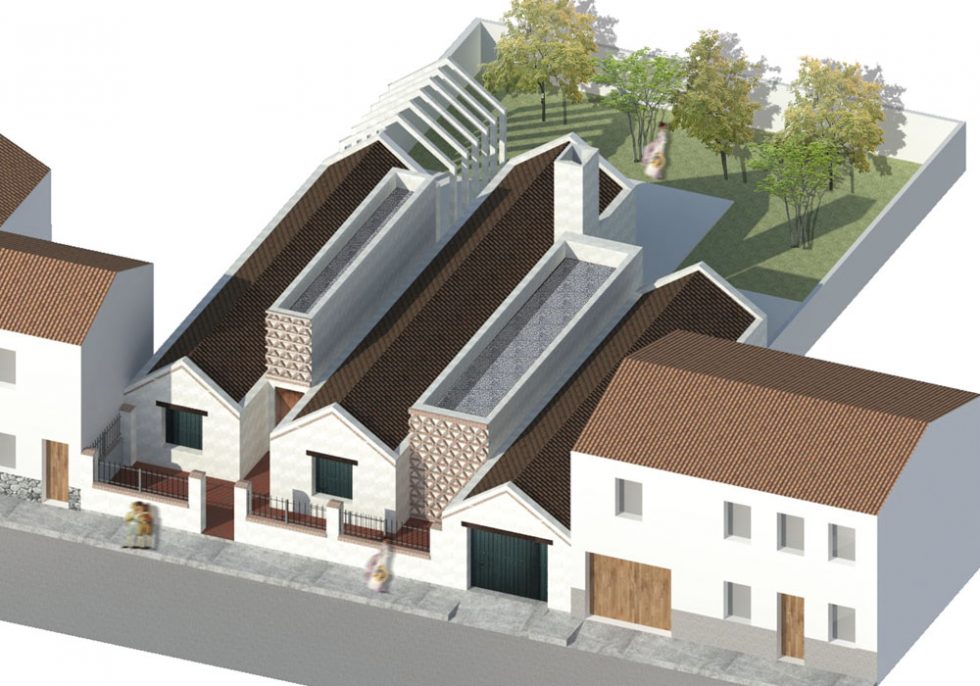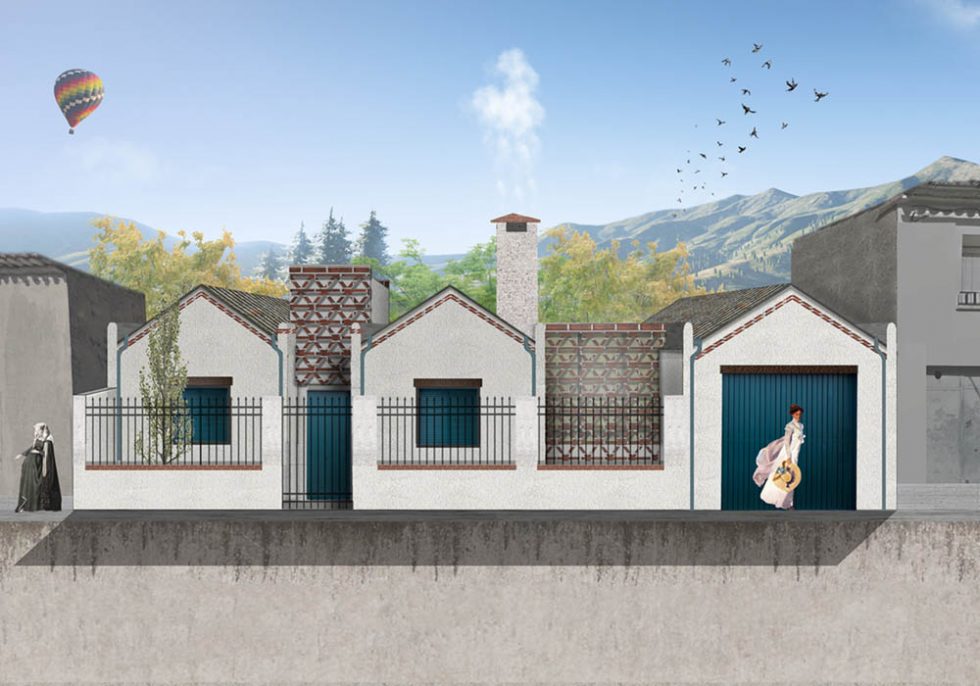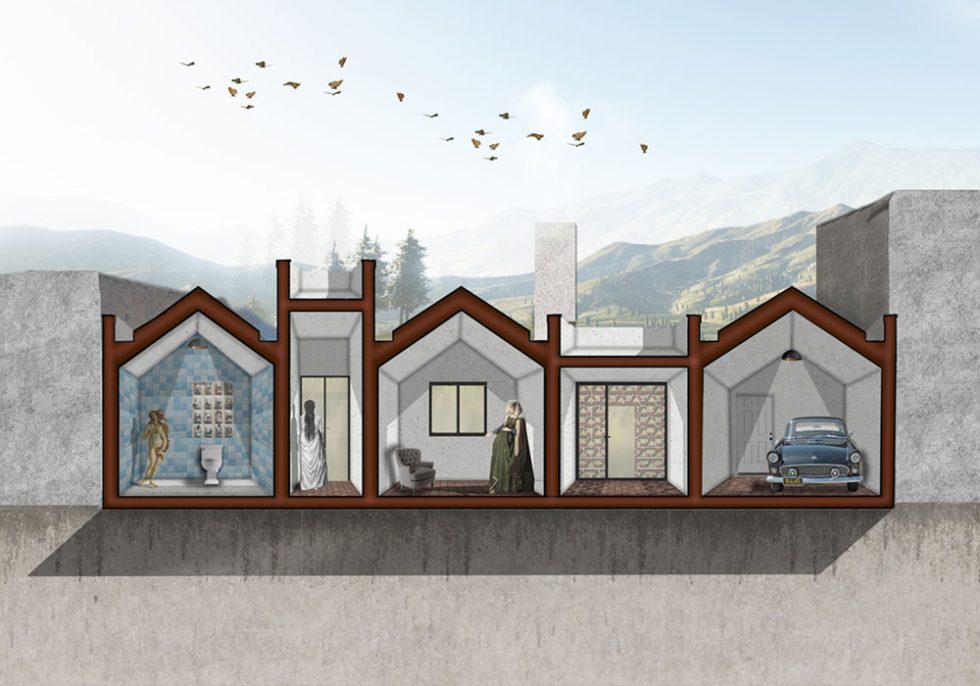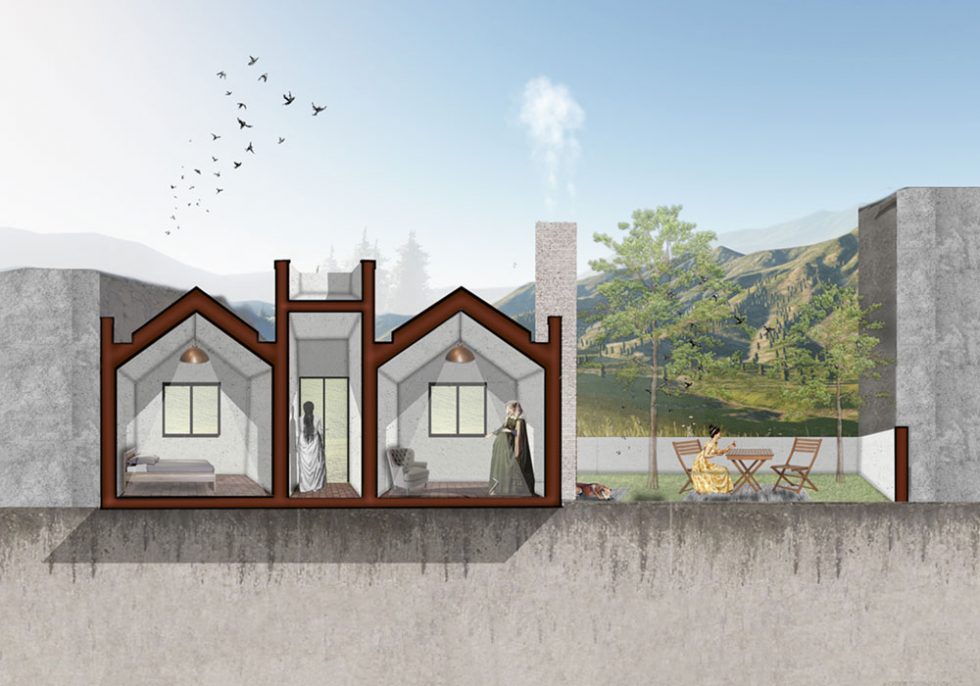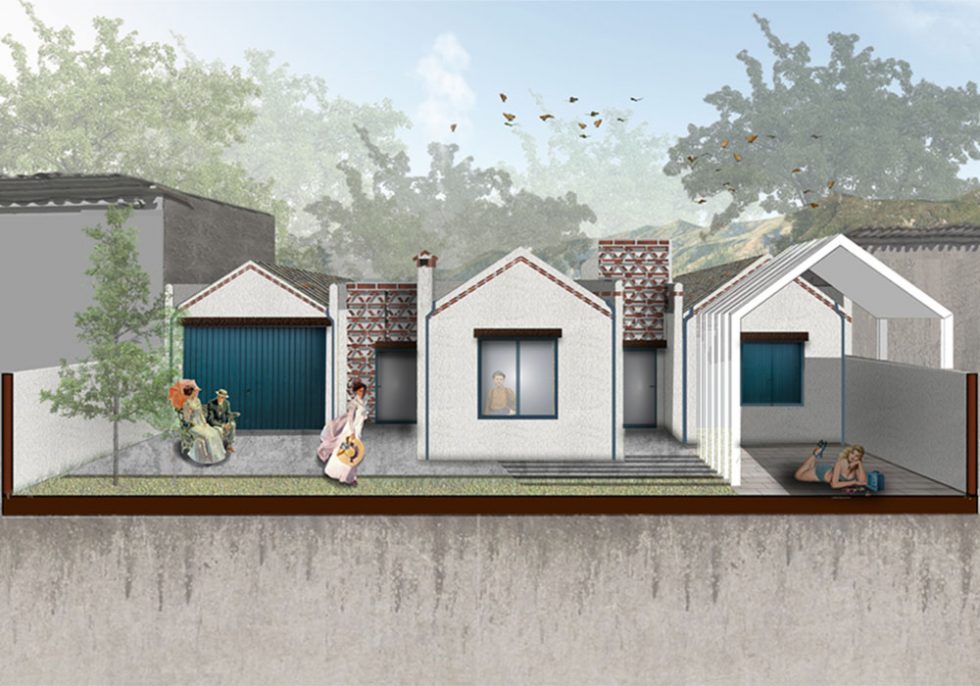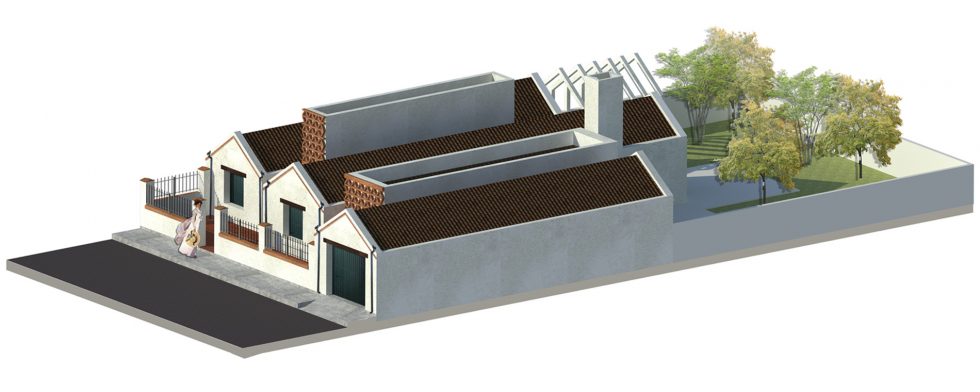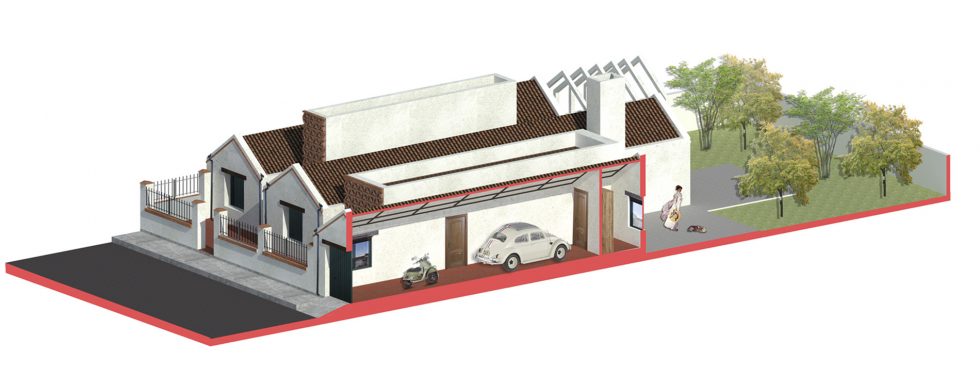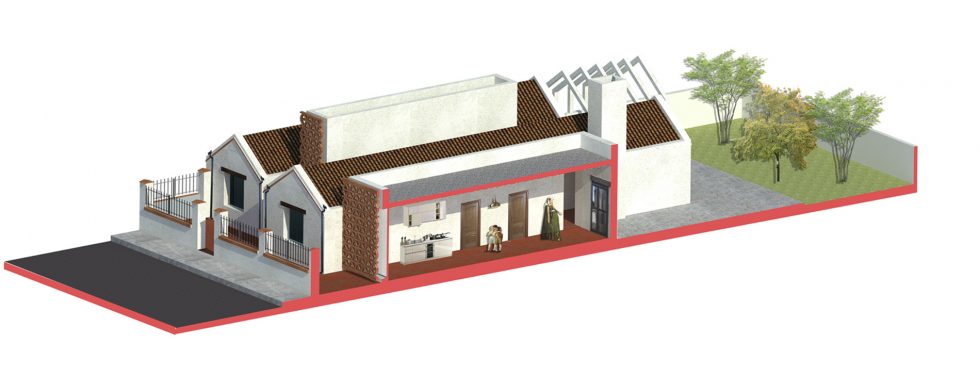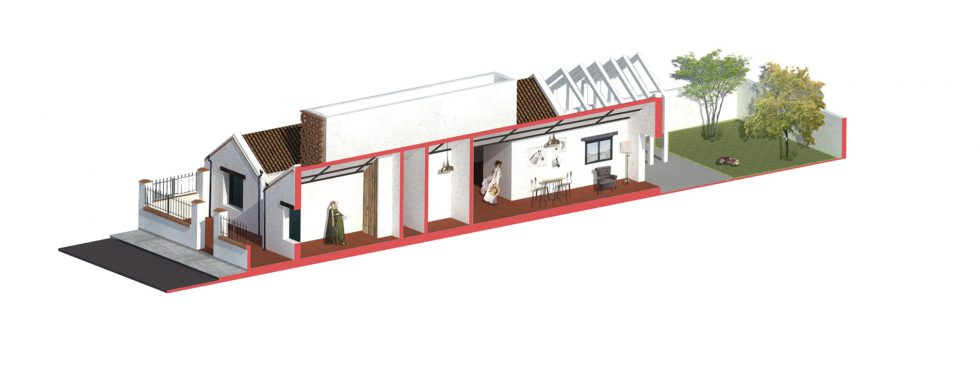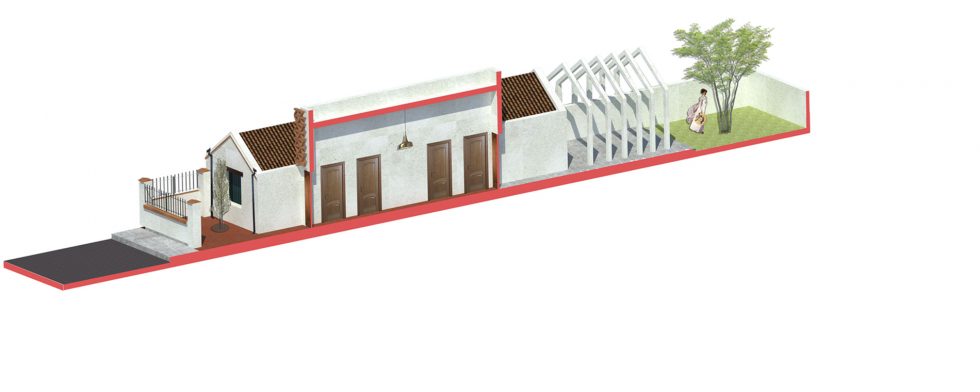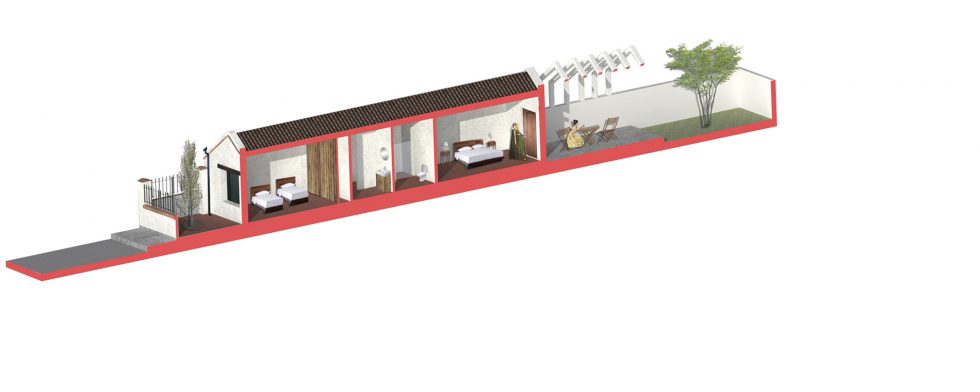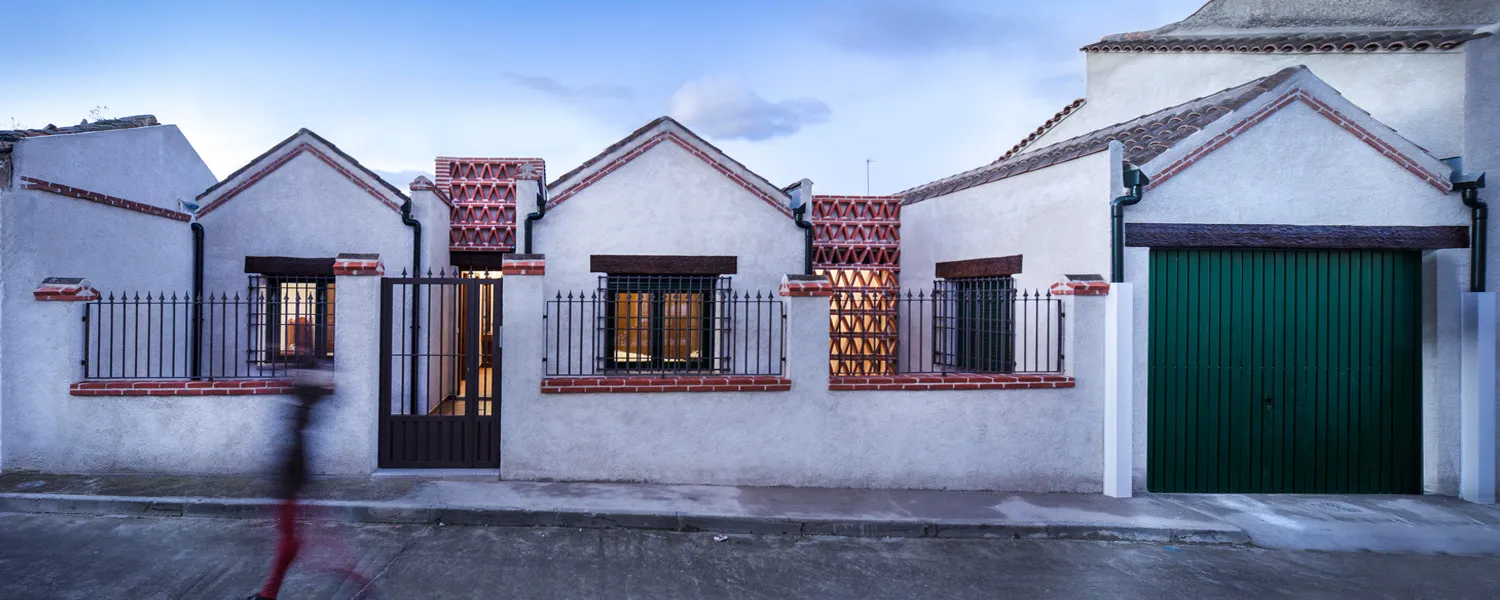
It is in the interleaved combination of these pieces where the project arises. The country house, which seems to be actually several houses if you look at it from the outside, becomes inside a succession of large spaces with different heights, irrigated by natural light everywhere.
It seemed to us a lack of respect towards the context to play with too modern languages in this house, so we decided, without complexes, to use rustic elements from the local collective imagination in our project. In this way, we get a country house with a rural aspect, well integrated in its environment, but on the other hand it is not a usual house there, since in the background it is a completely different house to any other of those that are they usually build in the town both in plant and in volumetry and spatiality.
We dress the project with textures, materials, construction elements and formal games of what we imagine we would find in a town in the area, but we play with contemporary project techniques to conceive the building.
In the fields surrounding the place we can find numerous abandoned tobacco dryers, which are agricultural buildings that had facades built based on exposed brick lattices, to encourage cross ventilation inside, and thus better dry the tobacco leaves that they hung inside.
As architects, the dryers seemed too attractive for us not to incorporate them in some way in our country house, so we decided to create double ventilated facades in certain cloths of the house to passively and naturally reduce the effect of the sun inside of the house
The windows were marked with wooden lintels, traditional wrought ironwork and carpentry and green carriage shutters, etc. were used. all elements of the collective imaginary about the rural world, without necessarily being elements used in the traditional architecture of the area.
A country house with a contemporary plan and spatiality, but camouflaged in the rural world through symbolic elements of village architecture.

